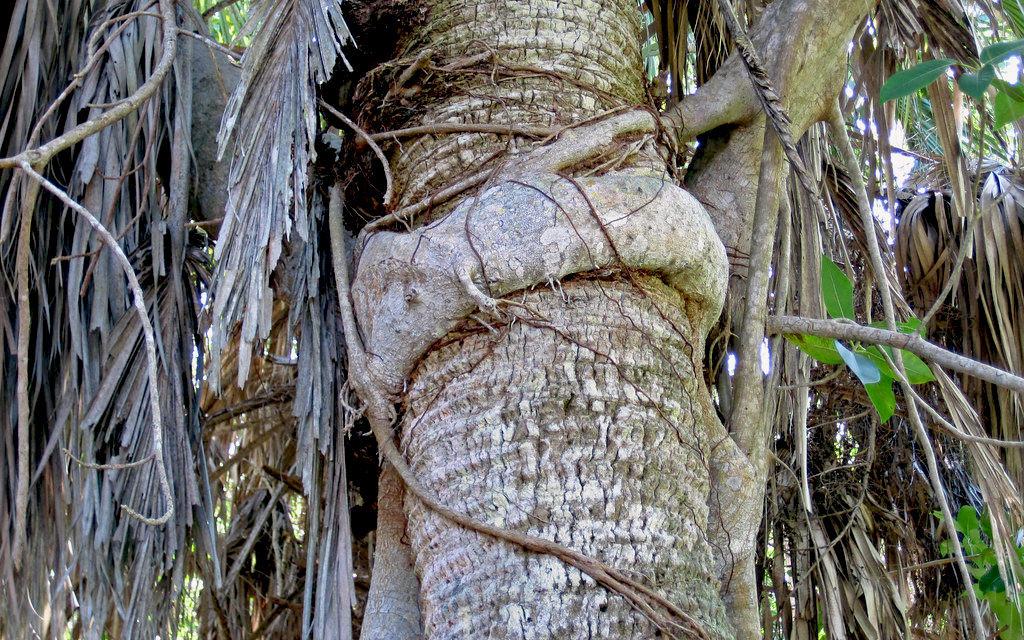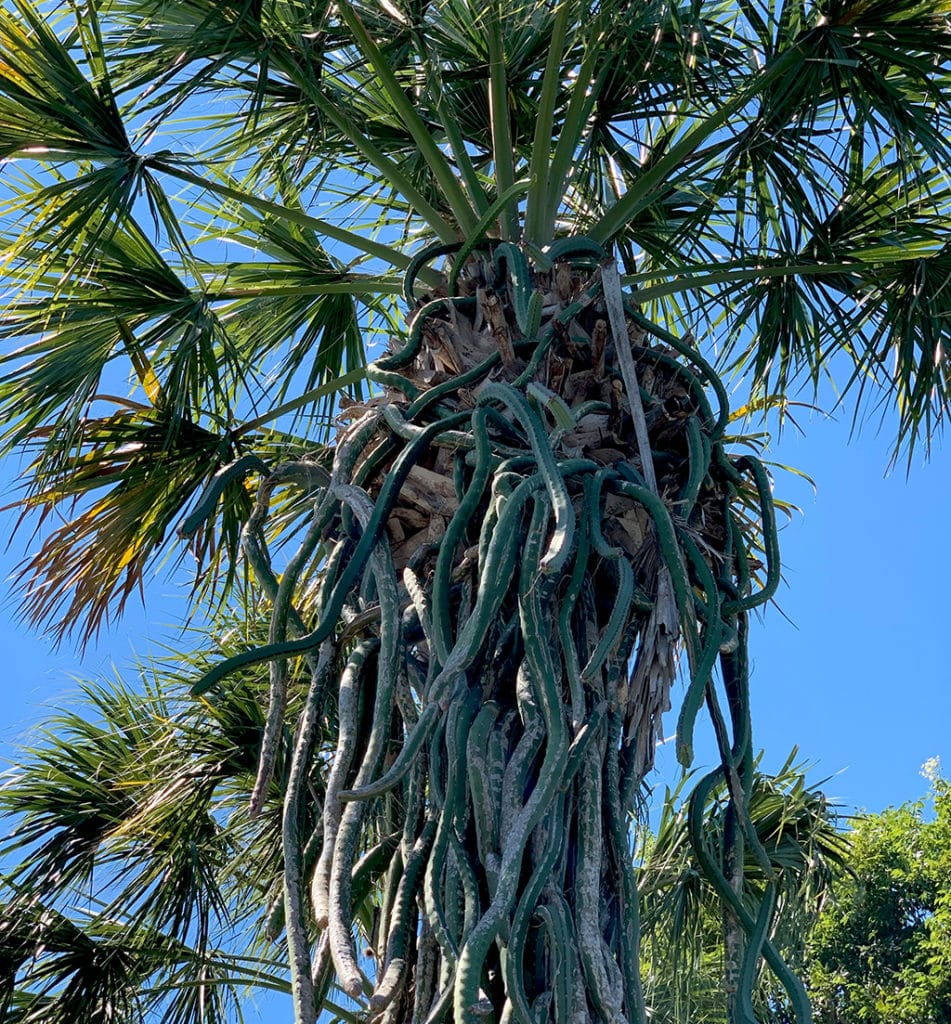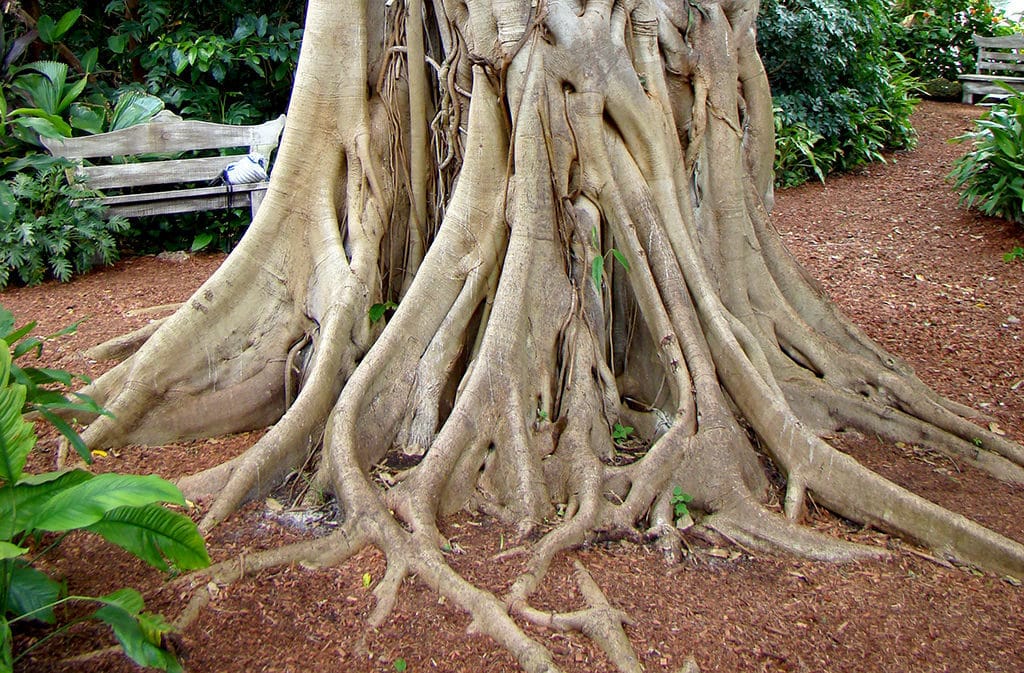You’ve seen them around town. The green and brown vines that grow up and around our beloved palm trees and other types of trees on island. These “vines” are actually roots of the infamous strangler fig tree, which is a native plant species to Florida. I know, that came as a bit of a surprise to me, since they seem rather invasive.

What Is A Strangler Fig And How Does It Kill Other Plants?
Strangler fig trees are, in fact, fruit producing trees as the name suggests. These trees have long, sturdy roots that grow downward into the soil, while wrapping around a host tree. Eventually, once the roots reach the soil and start absorbing the needed nutrients, it will kill (read strangle) the host tree, hence its name.
How Do Strangler Figs Start?
After a little research on these peculiar looking trees, I learned that animals such a birds and raccoons spread the fig seed germination by dispersing (read pooping) on the canopy of other trees. The strangler fig roots then start to grow down and around the tree base, until it reaches the ground.
As the tree starts to grow on its own and produce more fruit, the life cycle continues. The animal eats the fruit, moves along, and plants another strangler fig tree in the palm fronds of your favorite cabbage palm.

So, Are Strangler Figs Good or Bad?
While strangling trees isn’t the most ideal situation, especially the native trees like our cabbage palms, the strangler figs aren’t all bad. They actually provide a nice canopy shelter and food source for our unique wildlife on island. They are also very salt-tolerant and strong rooted trees, that provide protection and hardly up-root during high-wind storms.
However, you don’t want to have the strangler fig too close to your home or business. The strangler fig’s strong roots will dig down into your yard, and usually find important pipes such as your sewer line! (Speaking from experience).

Talk About Strangler Figs
It’s a bit of a touchy subject, since the strangler fig is a native plant. Removing one from your yard will require a permit from the City. But, if you see a strangler fig on your property, it’s worth a conversation with your landscaping company and the City’s Natural Resources Department to make sure the tree won’t interfere with your water or sewer lines in the future.
